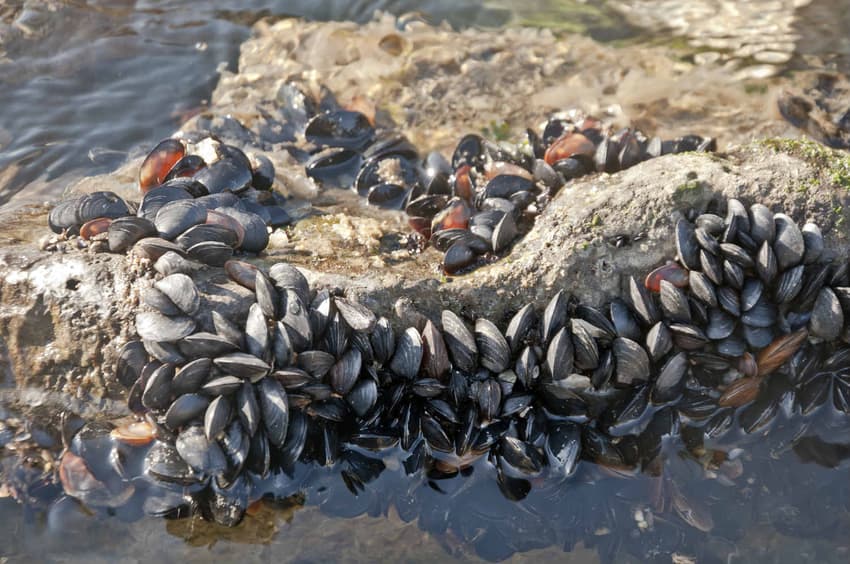Four out of five Norwegian mussels contain plastic: report

An analysis of particles in mussels colonies on the coast of Norway has shown that four out of five of the molluscs contain microplastics.
The Norwegian Institute for Water Research (Norsk Institutt for Vannforskning, Niva) conducted the research on behalf of the country’s Environment Agency (Miljødirektoratet), reports newspaper VG.
“Microplastics are likely to be mainly found in the animal’s digestive system. But since we eat the entire mussel, microplastics could be finding their way on to Norwegian dining tables,” Environment Agency director Ellen Hambro told VG.
13 different tests were carried out on 252 mussels, with 193 being shown to contain microplastics, according to the report.
Researcher Amy Lusher, who wrote Niva’s report, told VG that little is known about the consequences for humans of eating microplastics.
“There is increasing awareness around this problem. There is increasing concern for the consequences of eating mussels with microplastic in them,” she said.
Microplastics are small plastic particles in the environment that can be produced by industry or by larger pieces of plastic being broken down.
The particles can find their way into human organs, Lusher said.
The Environment Agency sees plastic pollution as a threat to wildlife on the coasts and in the ocean.
“Norway will try to solve the serious environmental problem of pollution of the oceans through local, national and international initiatives,” Hambro told VG.
The plastic also negatively affects the health of the mussels and the way they grow, Lusher added.
“We must now assess the consequences of plastics in mussels, whether it can affect populations and how ecosystems are affected,” she said.
Both synthetic and semi-synthetic types of plastic were found by researchers, writes VG. Semi-synthetic plastics are mostly used in the textile industry, while synthetic plastics are used to make plastic bottles and consumer products, Lusher said.
READ ALSO: Norwegian government to spend millions removing litter from sea
Comments
See Also
The Norwegian Institute for Water Research (Norsk Institutt for Vannforskning, Niva) conducted the research on behalf of the country’s Environment Agency (Miljødirektoratet), reports newspaper VG.
“Microplastics are likely to be mainly found in the animal’s digestive system. But since we eat the entire mussel, microplastics could be finding their way on to Norwegian dining tables,” Environment Agency director Ellen Hambro told VG.
13 different tests were carried out on 252 mussels, with 193 being shown to contain microplastics, according to the report.
Researcher Amy Lusher, who wrote Niva’s report, told VG that little is known about the consequences for humans of eating microplastics.
“There is increasing awareness around this problem. There is increasing concern for the consequences of eating mussels with microplastic in them,” she said.
Microplastics are small plastic particles in the environment that can be produced by industry or by larger pieces of plastic being broken down.
The particles can find their way into human organs, Lusher said.
The Environment Agency sees plastic pollution as a threat to wildlife on the coasts and in the ocean.
“Norway will try to solve the serious environmental problem of pollution of the oceans through local, national and international initiatives,” Hambro told VG.
The plastic also negatively affects the health of the mussels and the way they grow, Lusher added.
“We must now assess the consequences of plastics in mussels, whether it can affect populations and how ecosystems are affected,” she said.
Both synthetic and semi-synthetic types of plastic were found by researchers, writes VG. Semi-synthetic plastics are mostly used in the textile industry, while synthetic plastics are used to make plastic bottles and consumer products, Lusher said.
READ ALSO: Norwegian government to spend millions removing litter from sea
Join the conversation in our comments section below. Share your own views and experience and if you have a question or suggestion for our journalists then email us at [email protected].
Please keep comments civil, constructive and on topic – and make sure to read our terms of use before getting involved.
Please log in here to leave a comment.